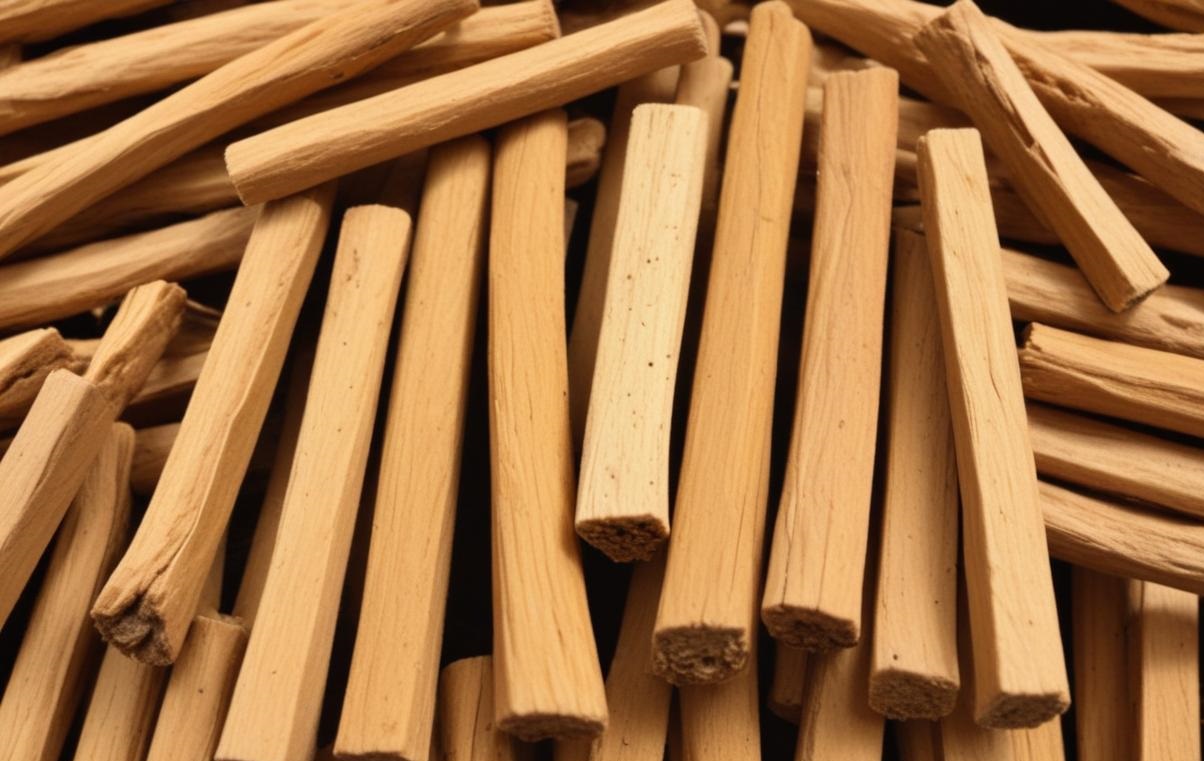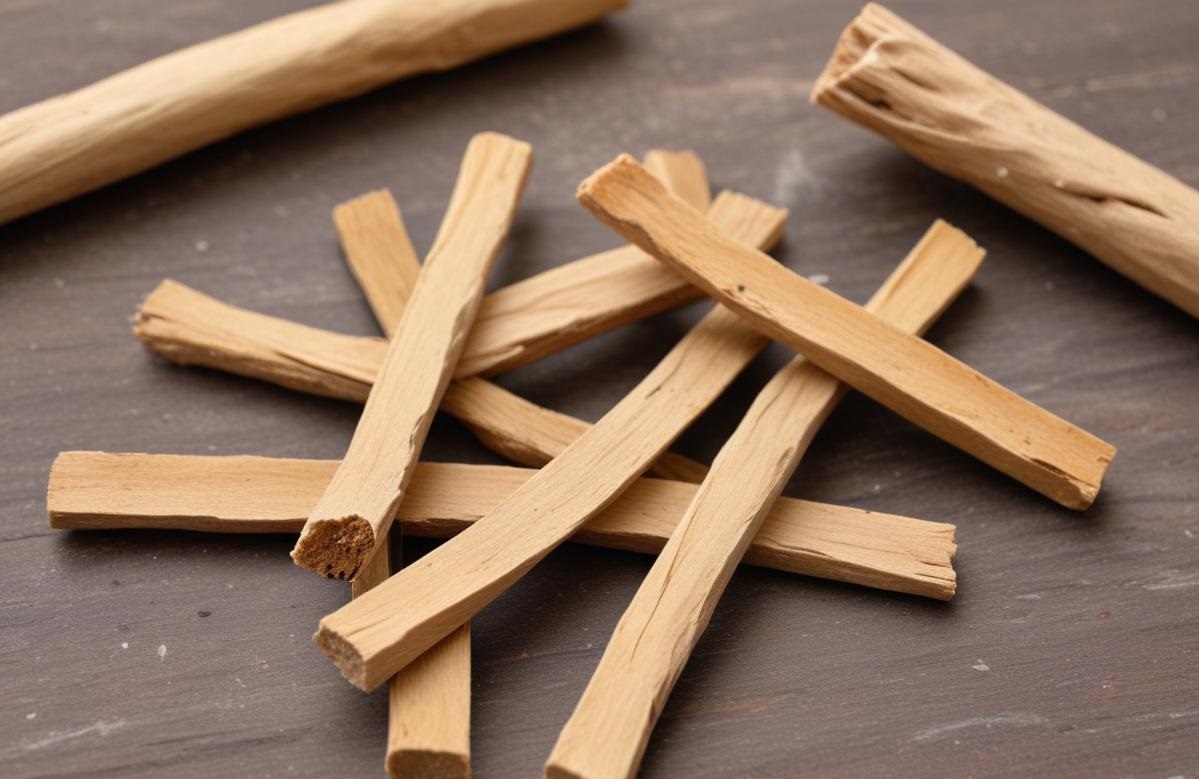Health
What are Palo Santo Sticks? What You Should Know

Palo Santo, meaning “holy wood” in Spanish, refers to the aromatic wood derived from the Bursera graveolens tree, native to South America’s coastal regions, particularly Peru and Ecuador. This sacred wood has been utilized for centuries in spiritual rituals, traditional medicine, and energy cleansing practices.
Origins and Cultural Significance
The dry tropical forests of South America have the Bursera graveolens tree. Palo Santo has a historical practice of being revered as an indigenous spiritual purifier among communities, including the Incas. The wood was burned by shamans during ceremonies to cleanse a space, repel negative energies, and call upon beneficial energies. Today, many continue to do this and use the Palo Santo in meditation, prayer, and energy healing practices.
Aroma and Composition
Palo Santo is known for its great, sweet, woody smelling scent; pines, mint, and lemon are often used to describe its fragrance. The rich content of aromatic resins and essential oils, especially limonene — which makes up a large part of its chemical profile, gives this distinctive scent. Palo Santo has insect repelling properties, including limonene, that contribute to the pleasant aroma on which it is based, and accordingly, makes a great natural way to keep mosquitoes and other pests away.
Traditional and Modern Uses
Beyond its aromatic appeal, Palo Santo has been traditionally used for various purposes:
Spiritual Cleansing: Palo Santo sticks burn during rituals to clear negative energy, bring about tranquility, and improve meditation.
Medicinal Applications: It is used in folk medicine for the relief of symptoms such as headaches, colds, and stress, and it is now believed to have anti-inflammatory and analgesic properties.
Insect Repellent: It is so high in limonene that it repels mosquitoes and other insects and is, therefore, a natural substitute for chemical repellents.

How to Use Palo Santo Sticks
To utilize Palo Santo for its aromatic and cleansing properties:
Ignite the Stick: Hold one end of the stick at a 45-degree angle and light it with a match or lighter.
Allow it to Burn: Let the flame burn for about 30 seconds to a minute, then gently blow it out, leaving a smoldering ember that releases smoke.
Disperse the Smoke: Move the stick around the area or person you wish to cleanse, allowing the fragrant smoke to permeate the space.
Extinguish Safely: After use, extinguish the stick by pressing the smoldering end into a fireproof bowl or sand until the ember is out.
Benefits of Using Palo Santo Sticks
Blessed for more than spiritual uses, Palo Santo sticks are treasured as much for their benefits as they are for their smoky aroma. One of the big ones is the ability to create a calming and grounding atmosphere. If you have room for it in your firewood pile, burning this woody can help to reduce stress and enhance relaxation, and so is great to have when you use mindfulness practices like meditation or yoga. It is also widely used in many modern wellness routines thanks to its ability to both uplift the mood and clarify the thoughts of many users.
Another use for Palo Santo is to freshen up the indoors. It has a natural fragrance that acts as a mild deodorant to hide bad odors and leave a pleasant, earthy fragrance. Palo Santo also contains essential oils thought by some to have anti inflammatory and antimicrobial benefits that some incorporate into massage oils or diffusers to also provide added wellness benefits. This scientific research on these uses is still in its infancy, with substantial anecdotal support for these users.
Palo Santo’s smoke is also sometimes used in rituals to attract positive energy and help you find emotional balance beyond personal wellness. The wood is believed to be used for cleansing physical spaces and cleansing individuals of emotional debt as well, and so is a tool for holistic healing.
How to Identify Authentic Palo Santo Sticks
The increased interest in Palo Santo has seen a flood of imitations and nonsustainable products pop up in the market. One thing I always say is that it’s essential to know how to recognize true Palo Santo. Palo Santo, which is authentic, typically comes from the Bursera graveolens tree and has a very distinct, somewhat citrusy, sweet-smelling aroma when burned. Even unlit, the wood should feel dense and smell of a subtle scent.
Another critical factor is sourcing. The Palo Santo is harvested sustainably by reputable suppliers, only cutting fallen branches or trees that have naturally finished their life cycle. The approach corresponds with time honored practices and definitely protects the sacred wood. The good news is that front of pack communication from ethical brands often includes a commitment to sustainability, ensuring that your shopper knows that the brand is ‘doing it right’.
Pay attention to the color and texture of the wood when buying too. All Palo Stano we receive should be light brown and have a smooth, slightly oily surface from its natural resin content. Don’t be fooled by too dry, too brittle, or less-than-fragrant products; they could be cheap copies.
The Bottom Line
Palo Santo sticks are packed with a rich herbal history, aromatic appeal, and scientific potential. Palo Santo is still widely used for its spiritual purposes, as a natural insect repellent, and because it’s so fragrant! When you use ethically sourced products and do use them mindfully, you honor the legacy of this sacred wood, and you’re helping to preserve it.

-

 Life Style10 months ago
Life Style10 months agoWho is Amra Nor Jenkins? The Untold Story About Jeezy’s Daughter
-

 Celebrity6 months ago
Celebrity6 months agoThe Private World of Marina Pearl LeBlanc, Matt LeBlanc’s Only Child
-

 Entertainment10 months ago
Entertainment10 months agoWhat is Shoujo Ramune? The Comprehensive Guide
-

 Celebrity11 months ago
Celebrity11 months agoThe Untold Truth of William Mapel: A Deep Dive into His Personal Life
-

 News11 months ago
News11 months agoRanch World Ads Review: Everything You Need to Know
-

 Celebrity11 months ago
Celebrity11 months agoThe Untold Story of Denika Kisty: Her Family, Net Worth, and More
-

 Celebrity11 months ago
Celebrity11 months agoWho Is Stephanie Sarkisian? All You Need To Know AboutSteve Sarkisian’s Ex-Wife
-

 Life Style10 months ago
Life Style10 months agoJill Wagner Accident: Life and Health After Accident











